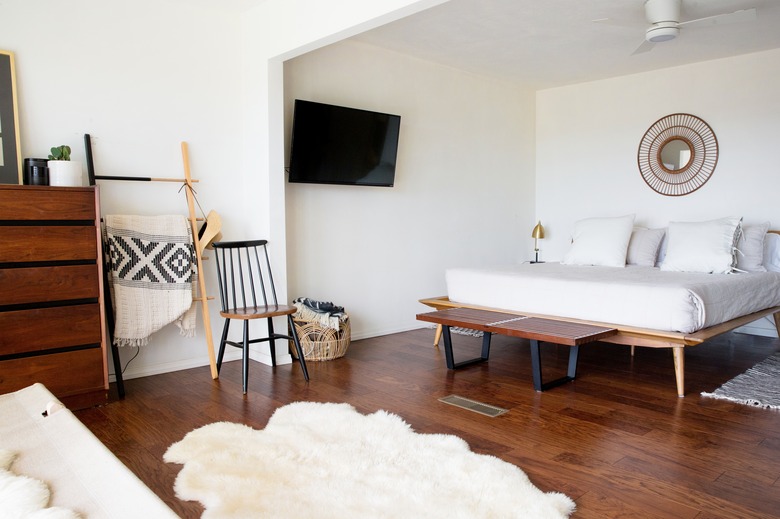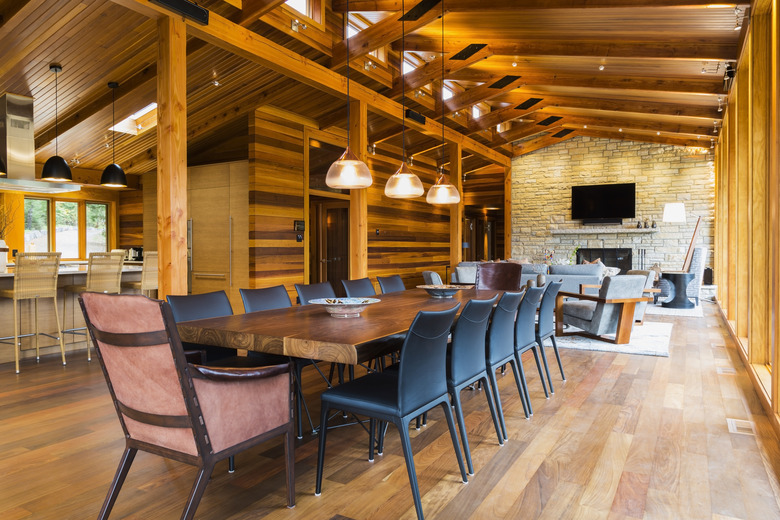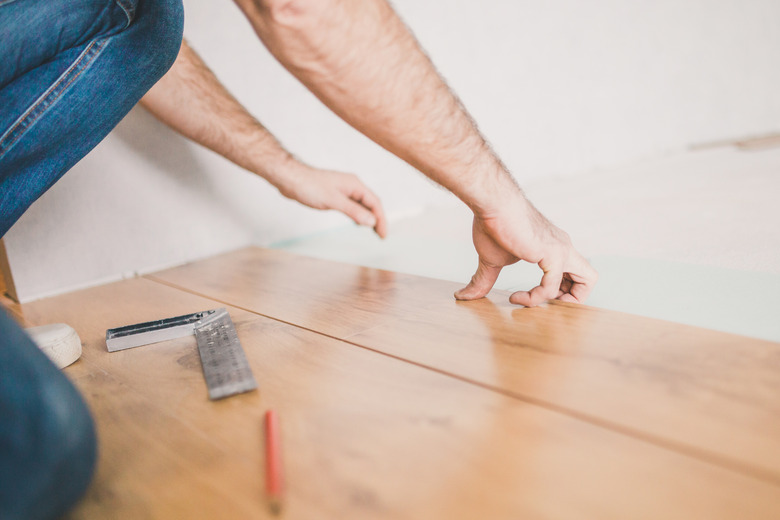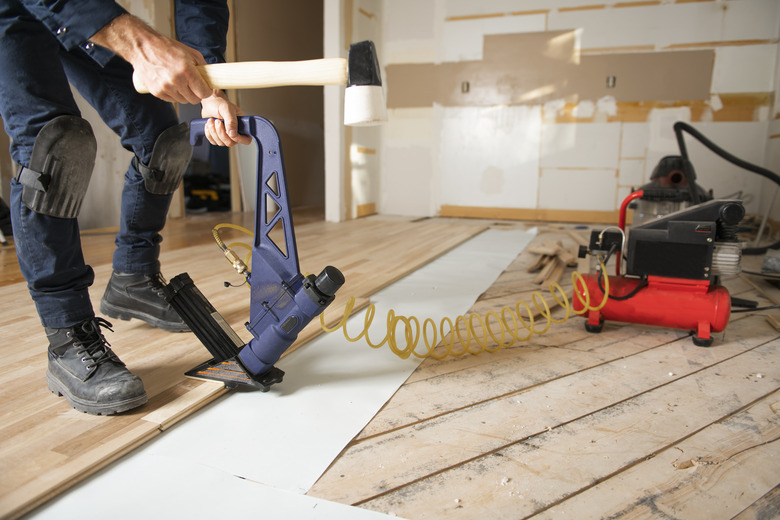Brazilian Walnut Flooring: A Homeowner's Guide
Brazilian walnut hardwood flooring is a dark hardwood often considered one of the most beautiful of all exotic hardwood flooring options. It is also incredibly durable — in fact, it is one of the hardest woods around.
That being said, this hardness actually makes Brazilian walnut a notably difficult wood with which to work, and the high level of oil in the wood also makes it incompatible with some finishes. One of the biggest downsides of Brazilian walnut, though, is the fact that it can be prohibitively expensive due to both its rarity and being a difficult wood with which to work.
About Brazilian Walnut Trees
About Brazilian Walnut Trees
Brazilian walnut is not actually the name of a single species of tree, nor do these trees all grow in Brazil. In fact, there are seven species that fall under the Handroanthus genus, which are all given the umbrella term of "Brazilian walnut," although they are often called "ipe" or "lapacho." These trees grow throughout Central and South America, in parts of Mexico and on some islands in the Gulf Coast and Caribbean Sea.
Brazilian walnut trees are known for their uniquely durable wood as well as for producing beautiful flowers that look like little trumpets and come in vivid shades of white, yellow, purple, pink and red. In fact, the ipe is a national tree or flower in several countries, including Brazil, Ecuador, Paraguay and Venezuela.
Brazilian Walnut Flooring Hardness
Brazilian Walnut Flooring Hardness
One of the biggest selling points of Brazilian walnut flooring is its incredible durability. As the National Wood Flooring Association explains, the Janka hardness scale is a way of evaluating the hardness of a species of wood. It is determined by how many pounds of force are required to push half of a steel 0.444-inch-diameter ball into a piece of wood.
Red oak, largely considered the best wood for planing and the second best for boring, is ranked 1,290. Brazilian cherry is known for its notably high hardness rating and comes in at 2,820, more than twice the hardness of red oak. Brazilian walnut is even more hard than that, with a Janka rating of 3,680, which makes it the hardest of all woods used for solid hardwood flooring.
This means that even with large dogs and energetic kids, Brazilian walnut flooring can easily hold up for over 100 years. In fact, parts of the Coney Island boardwalk made with ipe survived over 30 years despite being walked on by millions of visitors each year and being subjected to sun and seawater day after day.
Brazilian walnut isn't just resistant to dents; it also has the same fire-resistance rating as concrete and steel, according to the Rainforest Alliance, and it is so dense that it won't even float in water, which makes it incredibly water-resistant. This hardness and denseness also means the wood is resistant to most insects and fungi. This is why it is so often used for exterior projects, such as decking, as well as interior rooms where solid hardwood is usually not a good choice, such as bathrooms.
Of course, a high hardness rating may be good when it comes to durability, but it also means that working with the wood is particularly difficult. Brazilian walnut is hard to cut, sand, nail and more, making it particularly difficult to install, especially for nonprofessionals. Paying for professional installation of such a wood can easily add a lot of money to a hardwood flooring budget but is highly recommended in the majority of cases.
It's also important to note that much of the durability of any hardwood flooring, including Brazilian walnut, depends on the quality of the floor's protective finish. The shiny surface of Brazilian walnut flooring is just as susceptible to scratches and wear as that any other hardwood flooring.
Brazilian Walnut Sustainability
Brazilian Walnut Sustainability
This exotic hardwood grows slowly and in low densities. To make matters worse, the trees themselves have notably thin trunks, so although they can grow up to 150 feet tall, they do not produce as much wood as many trees that are half their height. Unsurprisingly, this means there is not enough supply to meet the high demand for such an attractive, durable wood.
Ipe trees have been over-harvested for years due to unsustainable, and often illegal, logging practices. Nowadays, there are sustainably harvested Brazilian walnut trees from Bolivia that are certified through the Forest Stewardship Council (FSC), and you can buy FSC-certified flooring products. Alternatively, those concerned about the sustainability of exotic woods who still want to use this unique material in their solid wood floors may be able to obtain reclaimed wood without any of the ethical concerns of using wood from a rare and unsustainable tree.
Brazilian Walnut Flooring Pricing
Brazilian Walnut Flooring Pricing
Due to its scarcity, transportation costs from South America and the difficulty involved in cutting it into planks, Brazilian walnut is particularly expensive compared to most domestic hardwood flooring products. In fact, whereas inexpensive domestic hardwoods come in at $1.75 per square foot and almost never cost more than $7 per square foot, even inexpensive engineered Brazilian walnut floors start at about $4.25 per square foot, and more expensive solid hardwood flooring made from the ipe tree can cost as much as $15.50 per square foot.
Additionally, because installing Brazilian walnut flooring is so difficult and time-consuming, the labor prices can add an extra $4 to $6 per square foot. Once installed, low-cost options for Brazilian walnut, including engineered hardwood floors, will end up costing $6.50 to $9 per square foot. Particularly high-quality, wide-width Brazilian walnut planks can come in as high as $11.75 to $18 per square foot, including installation.
Brazilian Walnut Flooring Finish Options
Brazilian Walnut Flooring Finish Options
Most Brazilian walnut comes prefinished with a top coat of aluminum oxide to make the wood even more resistant to scratching. These prefinished planks may come with or without a stain, which can enhance the highlights of the natural wood with lighter or darker shades. It is also possible, though less common, to find this wood unfinished, which can save you a little money on flooring materials.
If you purchase your planks unfinished, you may or may not choose to stain the wood for a custom color, and you'll need to add a protective finish, such as polyurethane or a traditional oil finish. As the Wood Database points out, Brazilian walnut and other tropical woods tend to contain high levels of oil, which makes it difficult for oil-based urethane finishes to dry. For this reason, it is best to stick with water-based polyurethane when applying finish.
While Brazilian walnut flooring is particularly durable, like all wood floors, it will eventually need to be refinished at some point. Fortunately, this wood needs to be refinished much less frequently than most domestic wood flooring options and can be refinished more times than most other woods, as its hardness means less of the wood will be sanded off during the refinishing process. In fact, whereas most other wood floors will need to be refinished every 15 to 25 years, Brazilian walnut may require refinishing only every 25 to 30 years.
Protecting Ipe Flooring
Protecting Ipe Flooring
Though Brazilian walnut is particularly durable and even heat-resistant, it has a problem common to many exotic woods: it is more susceptible to sun damage than most domestic woods. To prevent discoloration caused by the sun's UV rays, you may wish to apply UV-filtering film on your windows or keep the curtains or blinds shut throughout the day. Also, rotate your rugs and furniture over the years to avoid having darker spots on your floors after a decade or two.
Brazilian Walnut Plank Width and Flooring Grades
Brazilian Walnut Plank Width and Flooring Grades
Brazilian walnut is sold in four different grades. The prices may vary based on the specific option you choose, but the best choice ultimately comes down to a matter of personal preference since the biggest distinction is actually the color of the wood and not the quality. The choices are:
- Clear grade: These planks are made only from the dense inner
part of the tree known as the heartwood, which is also the hardest part of the
tree. This grade is hand-sorted for color consistency, and while it comes in a
handful of shades, the most popular choice is one that looks similar to
American black walnut. - Select and better grade: There is more color variation in
this grade, and both the heartwood and the sapwood (located between the
heartwood and the bark of the tree) is used. While most wood from this grade
will be brown, some will have contrasting shades of green, red or yellow. - Rustic grade: This grade has even more dramatic color
variations than the select and better grade, as more sapwood will be mixed in. - Lapacho: Another name for the Brazilian walnut tree, this
grade is specifically sorted for its notable green coloring.
Brazilian walnut flooring comes in widths of 2 3/4 to 8 inches wide. Standard planks are those up to 5 inches wide, while those wider than 5 inches are considered wide planks. Planks come in varying lengths, ranging from 1 foot to 7 feet long, with the average plank measuring around 3 feet long.
References
- Rainforest Alliance: Ipe
- National Wood Flooring Association: Real Wood Real Life
- Home Flooring Pros: Brazilian Walnut Flooring (Ipe): Reviews, Best Brands & Pros vs Cons
- The Wood Database: Finishing Exotic and Tropical Hardwoods
- ImproveNet: How Much Does Walnut Flooring Cost?
- Terramai: Why Ipe Has Fallen out of Favor With Environmentally Conscious Designers



